Key takeaways:
- Stage presence combines confidence, charisma, and authenticity, creating a memorable connection between performer and audience.
- Engaging with the audience through eye contact and storytelling fosters intimacy and enhances the overall experience of a performance.
- Techniques such as deliberate movement, vocal variety, and embracing authenticity can significantly improve stage presence.
- Building confidence involves practice, self-reflection, and visualization techniques to transform nervousness into a captivating performance.

Understanding stage presence
Stage presence is the invisible thread that weaves a performer’s talent into an engaging experience for the audience. I remember my first gig; I was so focused on hitting the right notes that I almost forgot to connect with the crowd. It’s a bit like telling a story—doesn’t every good story thrive on connection and emotion?
What truly defines stage presence? It’s a blend of confidence, charisma, and authenticity. I’ve noticed that when artists are genuinely themselves, that energy radiates, creating a magnetic atmosphere. Have you ever watched a performer who seemed completely at ease, making you forget about the world outside? That’s the power of being present and vulnerable on stage.
Engaging with the audience is crucial for stellar stage presence. I often find that little gestures, like eye contact or responding to cheers, can transform the vibe. It’s fascinating to think about how these small actions can draw the audience into your world, making them feel like they are part of the performance and not just passive observers. How do you make your audience feel included during your shows?
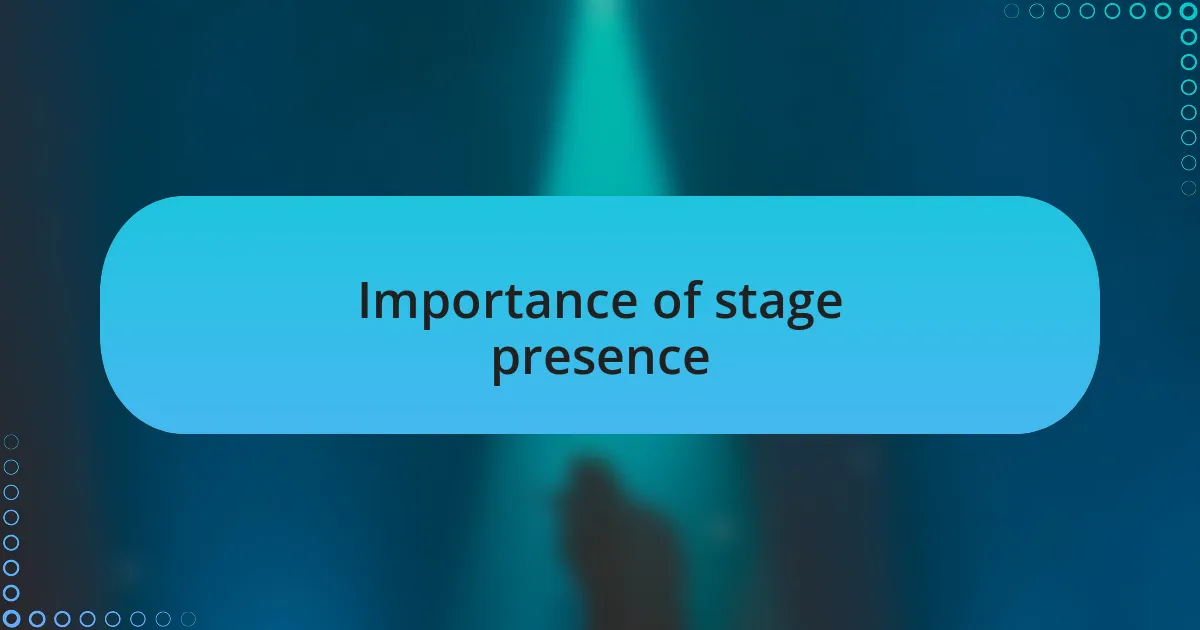
Importance of stage presence
Stage presence is essential because it transforms a performance from mere sound into a memorable experience. I recall a time when I attended a concert where the lead singer’s energy was infectious—every song felt like a conversation. It was as if we were all part of a shared moment, and it made the music resonate deeper within me. Isn’t that what we all crave in live performances?
The impact of stage presence extends beyond the performance itself; it builds lasting connections with the audience. I remember a festival where a lesser-known band managed to hold everyone’s attention through sheer charisma. Their genuine excitement lit up the stage and sparked an immediate bond with the crowd. That evening, I realized that a performer’s ability to engage heart and soul is what makes the memories last.
Moreover, stage presence can differentiate a good show from a great one. Have you ever noticed how some artists seem to effortlessly own the stage? I once witnessed a band that, despite technical difficulties, kept the crowd engaged with humor and interaction. It reaffirmed my belief that it’s not just about flawless execution; it’s about creating an unforgettable atmosphere that draws people in and makes them feel alive.
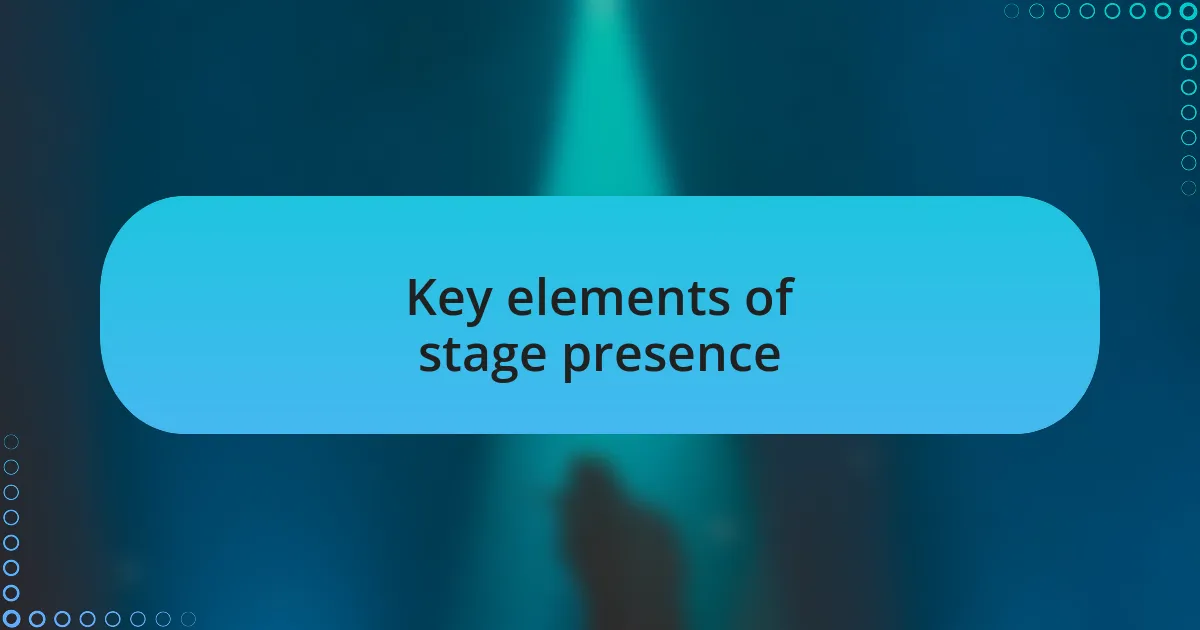
Key elements of stage presence
When I think of stage presence, the first element that comes to mind is confidence. Confidence can transform a simple performance into an electrifying event. I recall a small gig where the guitarist stepped onto the stage, and despite the modest venue, he commanded attention with his strong posture and fearless energy. It was an undeniable reminder that how an artist carries themselves can shape the entire audience’s experience.
Another crucial aspect is connection. I’ve seen bands that truly engage with their audience, looking into their eyes and sharing stories between songs. I remember one performance where the lead vocalist shared a heartfelt story about the inspiration behind a song, which seemed to pull everyone closer. This level of connection fosters a sense of intimacy, making every attendee feel like they’re a part of something special. Have you experienced that sense of belonging at a concert?
Finally, the visual elements cannot be overlooked. Lighting, costumes, and movements on stage play a significant role in enhancing a band’s presence. I once attended a show that incorporated stunning visuals alongside powerful music, and it felt like a journey. The synchronized lights and costumes added layers to the performance, enriching the overall experience and leaving the audience in awe. It made me question: how often do we consider the power of visuals in music representation?
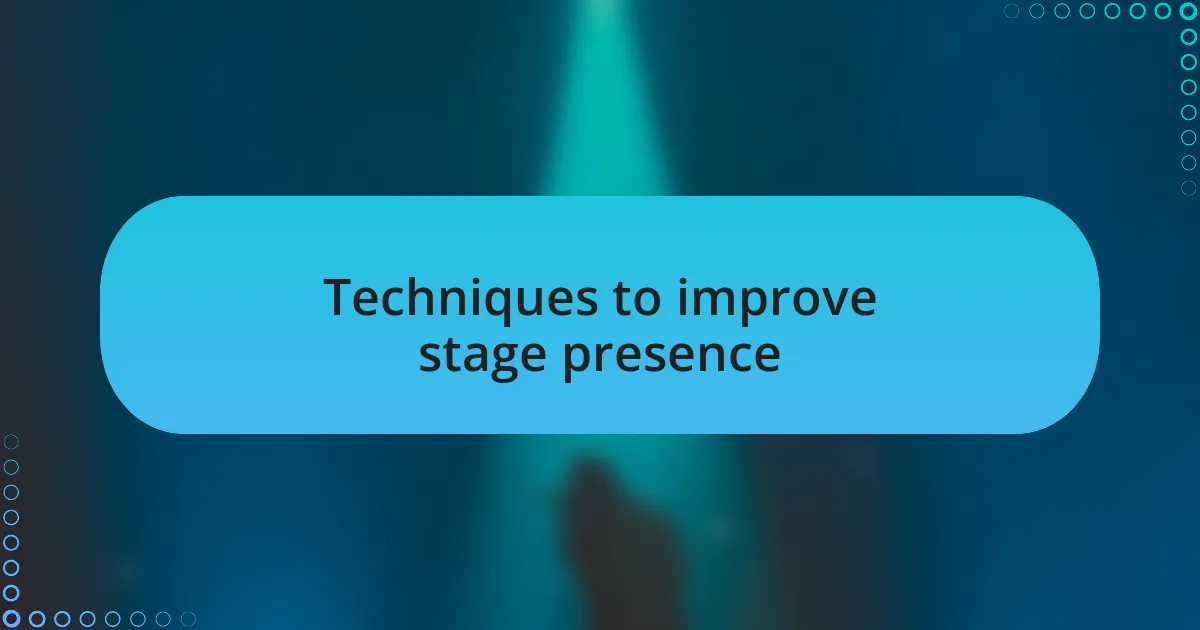
Techniques to improve stage presence
To enhance stage presence, one powerful technique is to practice deliberate movement. I remember attending a concert where the band used the stage space effectively, moving between various areas to connect with different sections of the audience. This intentionality not only kept the performance dynamic but also made each fan feel acknowledged. Have you ever felt more engaged simply because the performer made an effort to connect physically?
Another technique involves vocal variety and emotional expression. There was a time when I heard a vocalist who masterfully shifted her tone and volume, embodying the song’s emotions. It was captivating! When artists infuse their vocal delivery with passion and variation, it creates a deeper resonance with the audience. Can you recall a moment when a singer’s voice made you feel an overwhelming connection to the music?
Lastly, embracing authenticity can profoundly impact stage presence. I once saw a band that wasn’t afraid to be themselves, quirks and all, and it was refreshing. Their genuine interactions and honest performances drew me in, dissolving any barriers between the audience and the stage. This leads me to wonder: how much more impactful could performances be if artists showcased their true selves without fear?
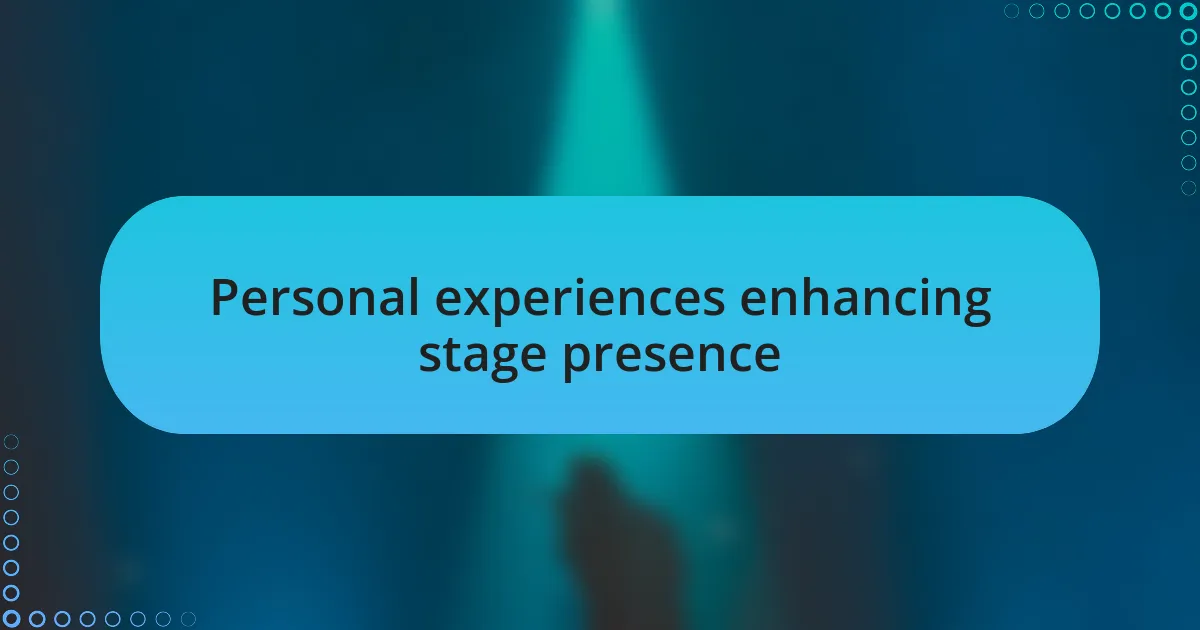
Personal experiences enhancing stage presence
When I think back to my early performances, I realize how crucial it was to learn from the crowd’s energy. One particular night, I noticed a subtle shift in the audience’s reactions; I adjusted my pace and tempo based on their excitement. This connection changed the atmosphere entirely. Have you ever experienced that moment when the audience seems to breathe alongside the performer? It’s electric.
Meanwhile, using storytelling as part of a performance transformed my stage presence significantly. There was a time when I shared a personal story before a ballad, and the crowd leaned in, hanging onto every word. It felt as if we were all part of one emotional journey together. Don’t you think a personal touch can make a song resonate much deeper?
I also found that stepping outside my comfort zone led to tremendous growth. During one gig, I tried interacting with fans by inviting them to sing along. Initially, I felt nervous, but their enthusiasm was palpable, and it boosted my confidence. This interaction made the performance feel like a shared experience rather than a solo endeavor. How thrilling it is to realize that vulnerability can lead to such authentic connections!
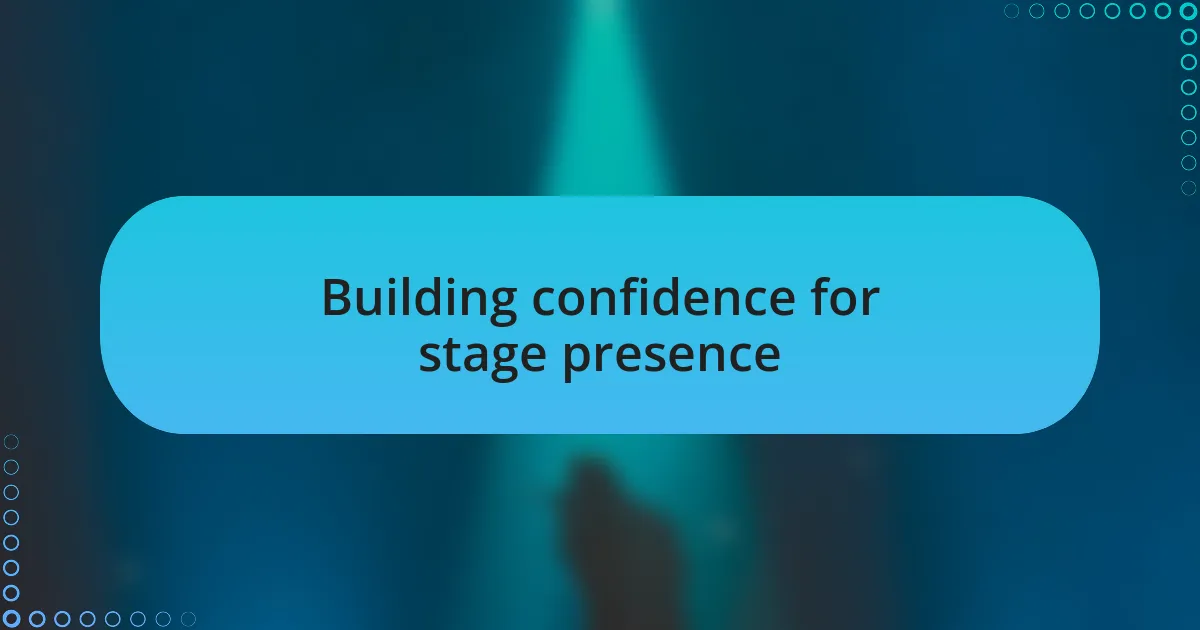
Building confidence for stage presence
Building confidence for stage presence is a journey that requires practice and self-reflection. I vividly remember a gig where my hands trembled as I approached the microphone. It wasn’t until I took a deep breath and focused on the music that my nerves settled. Have you ever noticed how grounding oneself in the moment can alter the entire experience?
There’s something powerful about visualization techniques. Before a performance, I often picture myself in the spotlight, radiating confidence. Once, during a particularly nerve-wracking show, I imagined the audience as friends, and suddenly, the pressure melted away. Doesn’t it make sense that shifting your perspective can unlock a deeper connection with your performance?
Practicing in front of friends also played a pivotal role in building my stage presence. One night, my band had an impromptu rehearsal with a few close pals watching. Their feedback was invaluable, and with each song, I felt more at ease. Have you ever found that friendly faces can boost your confidence? It’s true—these small steps can make a world of difference when stepping onto the stage.